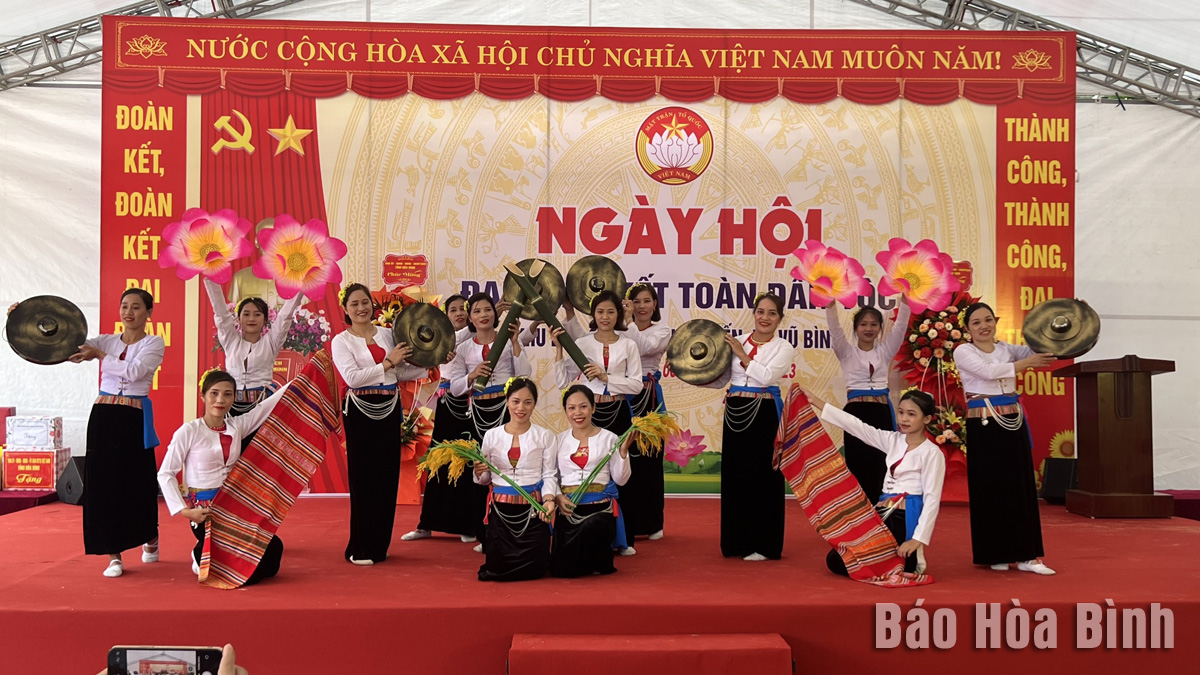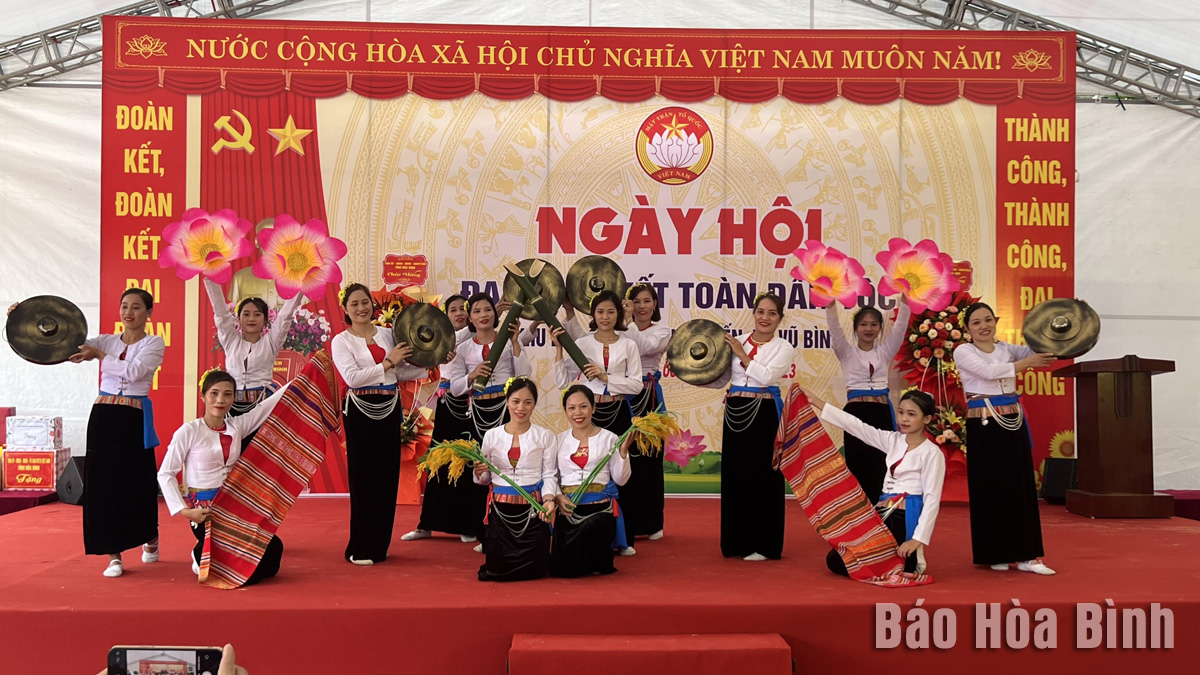
Located about 9km from the centre of Lac Son district, Vu Binh commune is home to 20 hamlets with 2,581 households and 11,925 people, more than 90% of whom are Muong ethnic people. Implementing the movement of "All people stay united to build a civilised lifestyle”, it has obtained many encouraging results, thus contributing to local socio-economic development.
Residents in Quyet Tien hamlet of Vu Binh commune (Lac
Son district) join in a singing and dancing performance at the Great National
Solidarity Festival.
Chairman of the communal People’s Committee Bui
Van Dan said that over the recent past, Vu Binh has encouraged locals to
strongly take part in emulation movements, comply with the Party and State’s
guidelines, policies and laws, develop livelihoods, and preserve traditional
culture.
In 2023, all the 20 hamlets were recognised as
"residential zones of culture” and 2,267 of the 2,581 households as "households
of culture”, equivalent to 87.8%. Among them, 716 households, or over 27.7%,
obtained the title for three consecutive years.
Movements and campaigns have been carried out
with diverse contents and in various forms, helping promote the strength of the
great national solidarity, give a facelift to rural areas, and improve people’s
life quality. Outstanding movements and campaigns include those calling for
solidarity in building new-style countryside and civilised urban areas,
encouraging farmers to boost agricultural production and trade, assisting the
youth to start careers, and engaging war veterans in the building of new-style
rural areas. As a result, many effective crop cultivation, animal farming, and
handicraft production models have taken shape, generating good profit and
income for people, Dan noted.
In addition, the commune has paid attention to
repairing and upgrading roads and mobilising local residents’ participation in
cleaning roads and dredging gutters. Partly supported with resources from the
public, it has completed concreting the roads within and linking many hamlets.
People’s consensus and all-level authorities’ attention have helped Vu Binh
make considerable improvement and better people’s life quality.
So far, the rate of concreted roads across
hamlets has reached 80.5% while concreted and paved canals and ditches now
account for 67.08%. There are no longer makeshift houses in the commune. Per
capita average income this year is estimated at 48 million VND (nearly 2,000
USD) while the multidimensional household poverty rate has been brought down to
12.8%. All local households have also gained access to hygienic water and the
national power grid.
Besides, cultural and social aspects have
recorded improvement, the political system been ensured, and security and
social order firmly maintained. Cultural, musical, and sport activities have
also been held frequently, helping better people’s spiritual life, according to
the official.
The People’s Committee of Lac Son district held a ceremony on April 28 to receive the provincial relic certificate for the ancient rock carving site at Suoi Co stream, located in My Thanh commune.
A special music show titled "The country is in the fullness of joy” has been held at Hoa Binh Square in Hoa Binh city in celebration of the 50th anniversary of the liberation of the South and national reunification (April 30, 1975–2025).
The People's Committee of Lo Son commune, Tan Lac district, has organised the local annual traditional stream fishing festival on April 19 - 20.
As a land deeply intertwined with human history and Vietnam’s millennia-long journey of nation-building and defence, Hoa Binh is often revered for its epic tales and legends.
Residents of Hoa Binh boast a rich cultural identity, reflected in their unique language, traditional attire, customs, and folk melodies – described as "sweet as honey, clear as a mountain stream.”
Lac Son district’s Vu ban town held the 2025 Truong Kha temple festival on April 12–13 (the 15th–16th days of the third lunar month). Since its revival in 2019, the festival has been organised every three years, preserving valuable intangible heritage while meeting the community’s cultural and spiritual needs.



